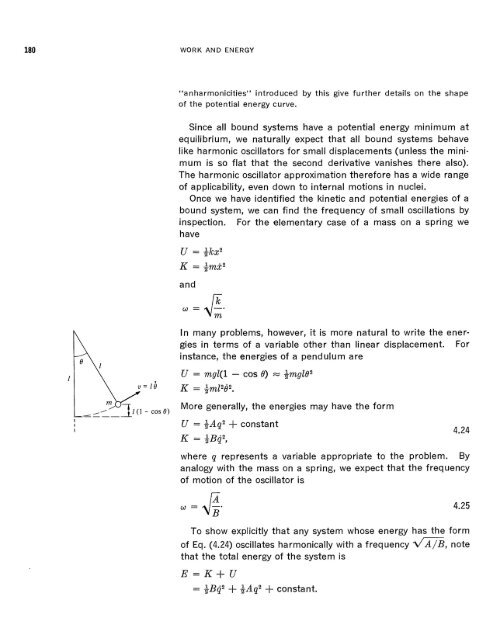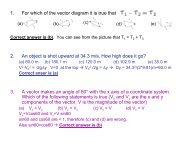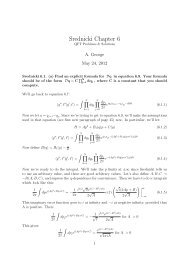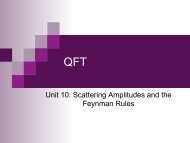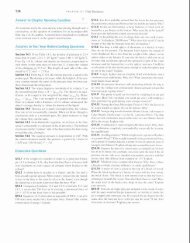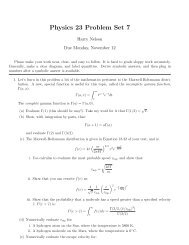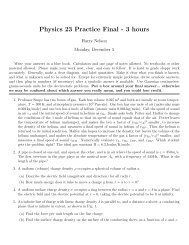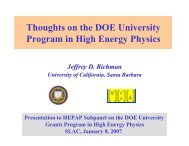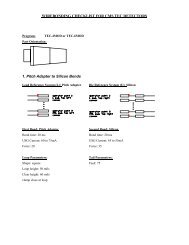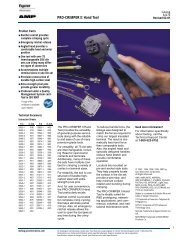Chapter 4 - UCSB HEP
Chapter 4 - UCSB HEP
Chapter 4 - UCSB HEP
You also want an ePaper? Increase the reach of your titles
YUMPU automatically turns print PDFs into web optimized ePapers that Google loves.
WORK AND ENERGY<br />
'%nharmonicities"' introduced by this give further details on the shape<br />
of the potential energy curve.<br />
Since alf bound systems have a potential energy minimum at<br />
equilibrium, we naturally expect that all bound systems behave<br />
like harmonic oscillators for small displacements (unless the minimum<br />
is so flat that the second derivative vanishes there also).<br />
The harmonic oscillator approximation therefore has a wide range<br />
of applicability, even down to internal motions in nuclei.<br />
Once we have identified the kinetic and potential'energies of a<br />
bound system, we can find the frequency of small osciClations by<br />
inspection. For the elementary case of a mass on a spring we<br />
have<br />
and<br />
2. =<br />
In many problems, however, it is more natural to write the energies<br />
in terms of a variable other than linear displacement. For<br />
instance, the energies of a pendulum are<br />
U = mgl(1 - cos 0) = +mgEB2<br />
d---<br />
1(1 - cos 6)<br />
More generally, the energies may have the form<br />
U = +Aq2 + constant<br />
K = +l3q=,<br />
where q represents a variable app~opriate to the problem. By<br />
analogy with the mass on a spring, we expect that the frequency<br />
of motion of the oscillator is<br />
-<br />
To show explicitly that any system whose energy has the form<br />
of Eq. (4.24) oscillates harmonically with a frequency WB, note<br />
that the total energy of the system is<br />
E=K+U<br />
= +Bq2 + +Aq2 + constant.


